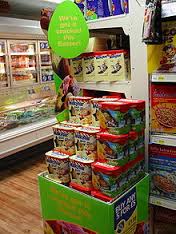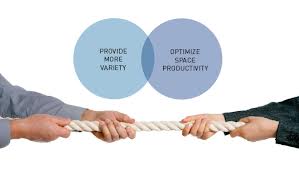Trade Promotion Strategy

A key component of the promotion strategy is the role of trade promotions by brand.
Drive incremental sales
Increase market share and brand loyalty
Buy-down everyday retail price
Bottom up vs. Top down Budgeting
• Top down Budgeting:
Spending budgets by account can be allocated by sales management to
each sales representative or account as described in the above process step.
The advantages of
 this method are:
this method are:
Ensures budgets are allocated based on overall corporate Promotional Strategy for the
Brand/Product.
Ensures that account level budgets will meet overall spending budget.
• Bottom up Budgeting:
Each sales representative can determine the promotion dollars needed to
meet their sales targets during the Create Promotion Plan process step. In this case, a bottom
up approach is used where each individual account budget is rolled up to an overall spending
level. The overall spending is compared to the total available dollars prior to approval. In this
scenario, the Allocate Budget to Accounts process step is not performed. The advantages of this
method are:
? Budgets can be generated based on needs at the account.
? Account opportunities rather than just historical sales can be included in the budgeting
process.
Promotion Plan by Account/Product: The promotion plan for the account will list all of the
events that are planned during the planning period. Information about each event will include:
? Event start and end dates as well as order and shipment dates for the promotion
? Products included in the event
? Expected base and incremental sales for each product (lift)
? Event tactics (end-aisle display, temporary price reduction, ad feature, etc.)
? Event costs (per case shipped to retailer, per case sold by retailer (scanned), lump sums)
? Payment methods (off-invoice, bill back, separate check)
? Expected profitability for the event (incremental Return on Investment (OI))
Key Process Measurements
• Trade Promotion Spending as a Percent of Sales: A common goal of initiating effective
 trade promotion practices and analysis is to be able to more efficiently spend trade promotion
trade promotion practices and analysis is to be able to more efficiently spend trade promotion
dollars – getting more revenue gains for fewer dollars. Measuring trade fund spending as a
percent of sales will help to determine if we are meeting that goal.
• Return on Investment for Promotion Dollars: Currently many manufacturers look at
revenue and case volumes rather than ROI. Implementation of effective trade promotion
processes will enable us to capture ROI and to see it increasing.
• Accuracy of promotion plan – revenue and spending projections: Compare actuals to
plan and document where differences occur. Over time we should see greater accuracy of the
plans – eventually leading to better production scheduling and reductions in the number of outof-
stocks.
• Number of outstanding deductions: The overall deduction balance should decrease over
time
• Time to resolve deductions: The amount of time needed to resolve and clear a deduction
should decrease.
• Additional distribution for a product
• Adding more facings for an established brand: Gaining facings for a new product
• Consistency of product demand: While promotions are being run, we will often see huge
increases in shipments of the promoted products followed by little or no demand for the
product. This indicates that retailers are forward buying the product at the lower promotion
price and storing it for future sales. The overall promotion strategy and plan should look to
reduce the amount of forward buying and diverting by retailers and even out the demand.
Contact us :sales@theretailinsights.com||skype: retailinsights||+91 7795001231





